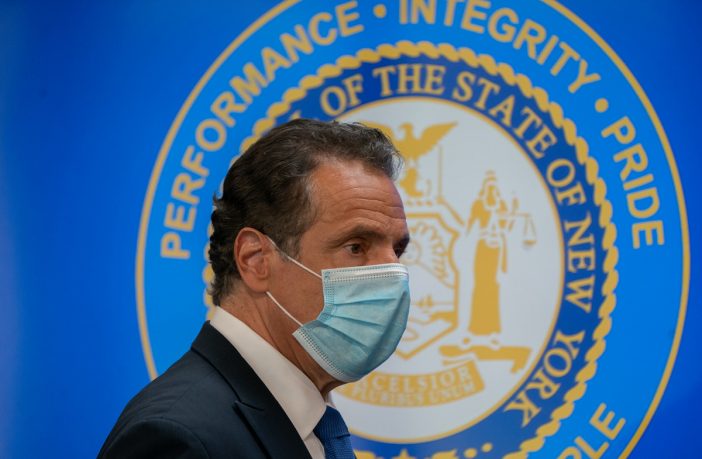Governor Andrew M. Cuomo announced that New York City will enter Phase 1 of reopening on June 8 and that five other regions—Central New York, Finger Lakes, Mohawk Valley, North Country and Southern Tier—began entering Phase 2 of reopening Friday, May 29. Phase 2 allows office-based workers, real estate services, in-store retail shopping and some barbershop services to resume. Each industry is subject to specific state guidelines to maximize safety and social distancing. Business guidance for phase two of the state’s reopening plan is available here.
Governor Cuomo also announced the implementation of a new early warning dashboard that aggregates the state’s expansive data collection efforts for New Yorkers, government officials and experts to monitor and review how the virus is being contained on an ongoing basis. It tracks new infections and their severity, hospital capacity by region, and other metrics. The early warning system dashboard was developed in consultation with internationally-known experts who have been advising New York State. The early warning dashboard can be found here.
“Remember that reopening does not mean that we’re going back to the way things were,” Governor Cuomo said. “Life is not about going back. Nobody goes back. We go forward. And it’s going to be different. This is about reopening to a new normal — a safer normal. People will be wearing masks and people will be socially distanced — it’s a new way of interacting, which is what we have to do. Wear a mask, get tested and socially distance.”
Dr. Michael Osterholm, Director of the Center for Infectious Disease Research and Policy at the University of Minnesota, said, “As New York State’s first 5 regions have been given the green light to begin to move from phase 1 to phase 2 it is absolutely critical that there is timely data to monitor new infections, hospitalizations, and hospital capacity. New York State’s new early warning dashboard does just that—it will help foster added transparency in the government’s efforts to protect New Yorkers and their families throughout the state.”
Dr. Samir Bhatt, Senior Lecturer (Associate Professor) in Geostatistics, The Department of Infectious Disease Epidemiology, Imperial College London, said, “It has been a privilege working alongside the New York team and seeing what they have accomplished in such a short time. We still live in an uncertain time, and policy must continue to be informed using as many strands of evidence as possible and this evidence should be there for everyone to see. This COVID dashboard transparently shows to all those living in New York what is happening in their region. As New York begins to move some regions from phase 1 to phase 2, these metrics provide a robust foundation for tracking the disease. First, we check if testing targets are being met. Next, we look at new infections: measured both by new cases and the test positivity ratio. We also look at case severity, which is measured by new hospitalizations. And finally, we monitor hospital capacity. We are carefully looking at these data for the five regions that are ready to move forward and want to see a consistent signal across all metrics. This dashboard gives us a crucial early warning system should the trends shift going forward.”
Dr. Eli Rosenberg, Associate Professor of Epidemiology and Biostatistics at UAlbany, said, “New York State’s new early warning dashboard will be a valuable tool for compiling the essential data we need to combat COVID-19 on all fronts. I’m also excited to see half of New York’s regions work towards reopening safely today as part of Phase 2, which will provide critical income and jobs for retail and real estate workers, among others, who’ve been sidelined by this crisis, as while we continue to closely monitor the indicators critical to maintaining the state’s public health.”
Michael LeVasseur, Assistant Professor of Epidemiology and Biostatistics, Drexel University, said, “During a crisis, transparency is vital. This early warning dashboard is an important tool for policymakers, business owners, and individuals to make data-informed decisions about safety in their communities. It is important for people using this tool to understand that no single metric can determine how safe it is to resume normal activities. As testing increases, more cases will be identified, but the percent of positive tests may decrease. Hospitalization data, however, can tell us the burden of disease in our communities and tracking our hospital capacity provides us with information on our ability to manage future surges. I applaud your team’s efforts to provide these data to the public.”
Dr. Noam Ross, a disease modeler at the non-profit research group EcoHealth Alliance, who has been advising the governor’s coronavirus task force on data analysis, said, “When it comes to any public health emergency, we must follow the data to inform policy decisions, and this early warning dashboard reflects the numbers we must watch every day to understand what is going on in the State. It’s important that the public gets to see the data that drives decision making, and I commend New York State for making this information widely available.”













